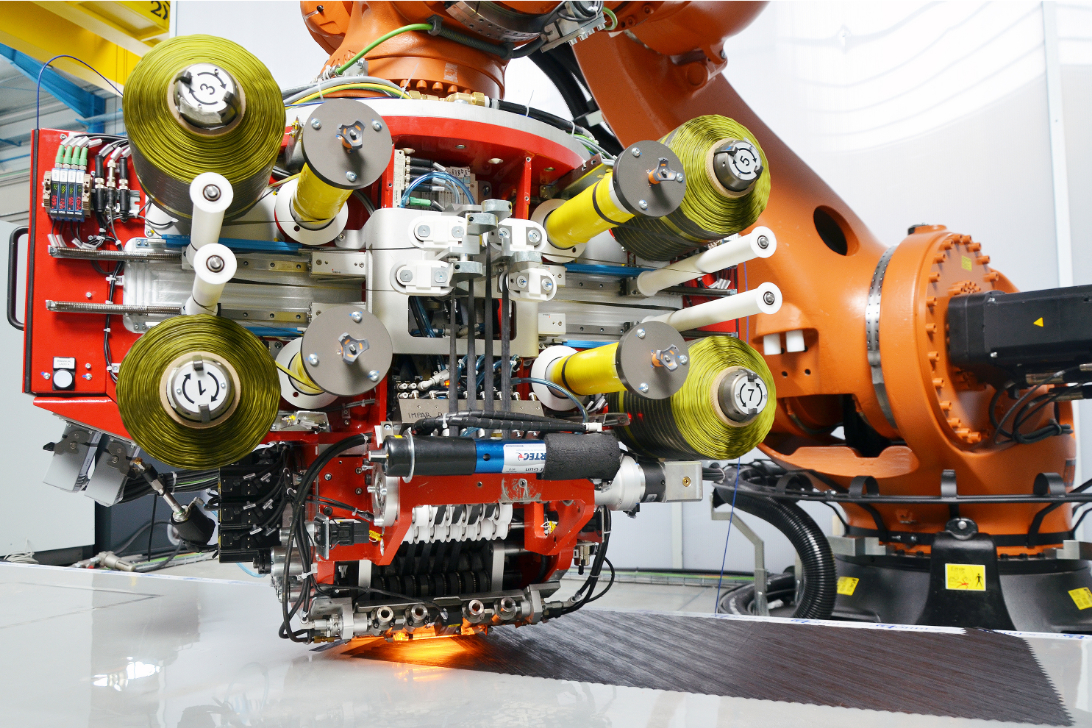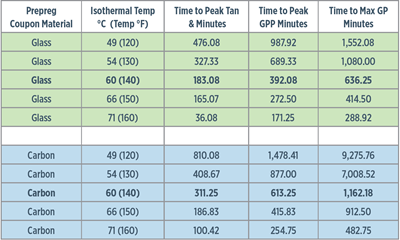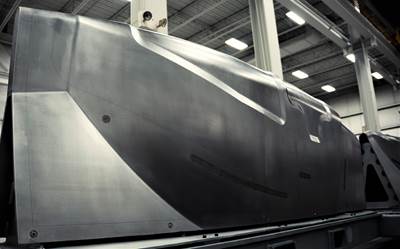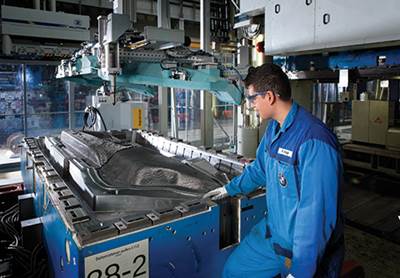Composites Curing
Curing in composites refers to the process where the composite materials, typically comprised of a resin matrix and reinforcing fibers, undergo a chemical reaction or heat treatment to solidify and form the final desired shape and properties. This stage is critical as it transforms the raw materials into a durable and structurally sound composite. Curing methods vary based on the type of matrix—whether it's a thermosetting resin like epoxy or a thermoplastic resin. Heat, pressure, or a combination of both are often applied during curing to activate the chemical reactions that cross-link the molecules within the matrix, creating a robust bond between the fibers and the matrix.

Latest Curing Articles
VIEW ALLUavos expands energy-efficient range of precision curing ovens
Aerospace industry and R&D customers adopting sustainable and resource-efficient practices can benefit from this line of ovens engineered for annealing, preheating, baking and post-curing composites.
Read MoreLaserline LDL lasers provide direct, efficient thermal processing
Modern industrial heating source simplifies architecture, reduces energy losses and cuts system complexity, covering large-area heating of molds to small UD tape consolidation.
Read MoreUavos composite curing ovens are awarded conformity certification
New line of products have passed Technical Testing Institute TSÚ PiešÅ¥any’s rigorous evaluation process.
Read MoreAdvanced autoclaves, ovens provide efficiency, precision and intelligent control
CAMX 2025: Olmar is highlighting its next-gen autoclaves and industrial ovens for composites curing to improve throughput, scale production and achieve tighter quality control.
Read MoreEpoxy resins, curing agents and reactive diluents
CAMX 2025: Royce Global adds to its epoxy product lines with toughened epoxy resins and mercaptan curing agents that assist in high-performance environments.
Read MoreBespoke UV-cured coating system development embodies customer commitment
CAMX 2025: Allied UV’s comprehensive production checklist reflects its vision to deliver the most efficient, tailorable UV LED coating systems for composites manufacturers.
Read MoreKnowledge Centers

In the Automated Composites knowledge center, CGTech brings you vital information about all things automated composites, from the manufacturing processes to the vendors and necessary tools.
LEARN MORELatest Curing News And Updates
ITA, Micor GmbH study the potential of in-line infrared drying of glass fiber
Research has shown that, beyond reducing energy consumption and production waste, an integrated, compact infrared module enables uniform sizing distribution on the glass fibers and more efficient production overall.
Read MoreEnvironmentally friendly composites polymerization initiator
CAMX 2025: The phthalate- and solvents-free Akperox ST-CL200 presented by AKPA Chemicals provides a reliable, user-friendly polymerization alternative while enabling high-performance production processes.
Read MoreAM method enables tool-free, energy-efficient thermoset composites production
University researchers highlight how the combination of a thermally curable resin system with photothermal curing eliminates the post-curing steps involved in discontinuous, continuous fiber parts fabrication.
WatchEpcon delivers integrated composite curing oven, RTO system
Patented solution supplied to an adhesives and sealants manufacturer effectively tackles precision curing and VOC emissions control.
Read MoreIndustrial curing autoclaves with advanced control systems
CAMX 2025: Turnkey Akarmak autoclaves support various composite curing needs with enhanced process control, international specification compliance and optimal heat distribution.
Read MoreComposite curing ovens are built for maximum performance
CAMX 2025: Wisconsin Ovens presents equipment for vacuum bag, filament-wound and honeycomb block heating technologies, offered with a variety of specific features and options.
Read MoreFeatured Posts
Exploring powder coating for composites
Advancements in powder coating technology make it a viable surface finish for a growing number of composite applications.
Read MoreCorebon induction heating
This sidebar to CW’s August 2024 feature article reviews this technology for more efficient composites manufacturing and why it aligns with Koridion active core molding.
WatchPlant tour: Joby Aviation, Marina, Calif., U.S.
As the advanced air mobility market begins to take shape, market leader Joby Aviation works to industrialize composites manufacturing for its first-generation, composites-intensive, all-electric air taxi.
Read MoreReal-time assessment of thermoset composites curing
The combination of material state management (MSM) software and an encapsulated sample rheometer (ESR) enables real-time cure recipe management or cure model development inside the autoclave.
Read MoreNine factors to consider when designing composites cure tooling
Gary Bond discusses the common pitfalls and compromises when designing good cure tooling and their holistic significance for a robust composite production process.
Read MoreMaterials & Processes: Fabrication methods
There are numerous methods for fabricating composite components. Selection of a method for a particular part, therefore, will depend on the materials, the part design and end-use or application. Here's a guide to selection.
Read More


















